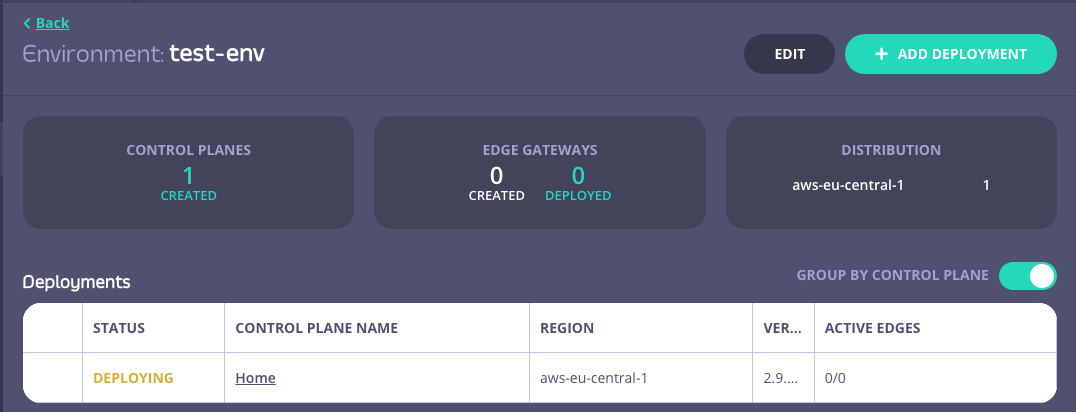Introduction
Environments are used to group your Control Plane and Cloud Data Planes into logical groups. For example you may want to create environments that reflect different departments of your organization.The number of Environments you can create is determined by your plan
Prerequisites
The following user roles can perform Environment Admin tasks:- Org Admin
- Team Admin
Adding a New Environment
- From the Environments screen, click Add Environment
- Select the team you want to assign to the Environment
- Give your new Environment a name
- Click Create
Editing an Existing Environment
An Org Admin can perform the following:- Rename an Environment
- Delete an Environment
- Click the environment Name from your list

- Click Edit

- You can now rename the environment, or delete it from your organization
